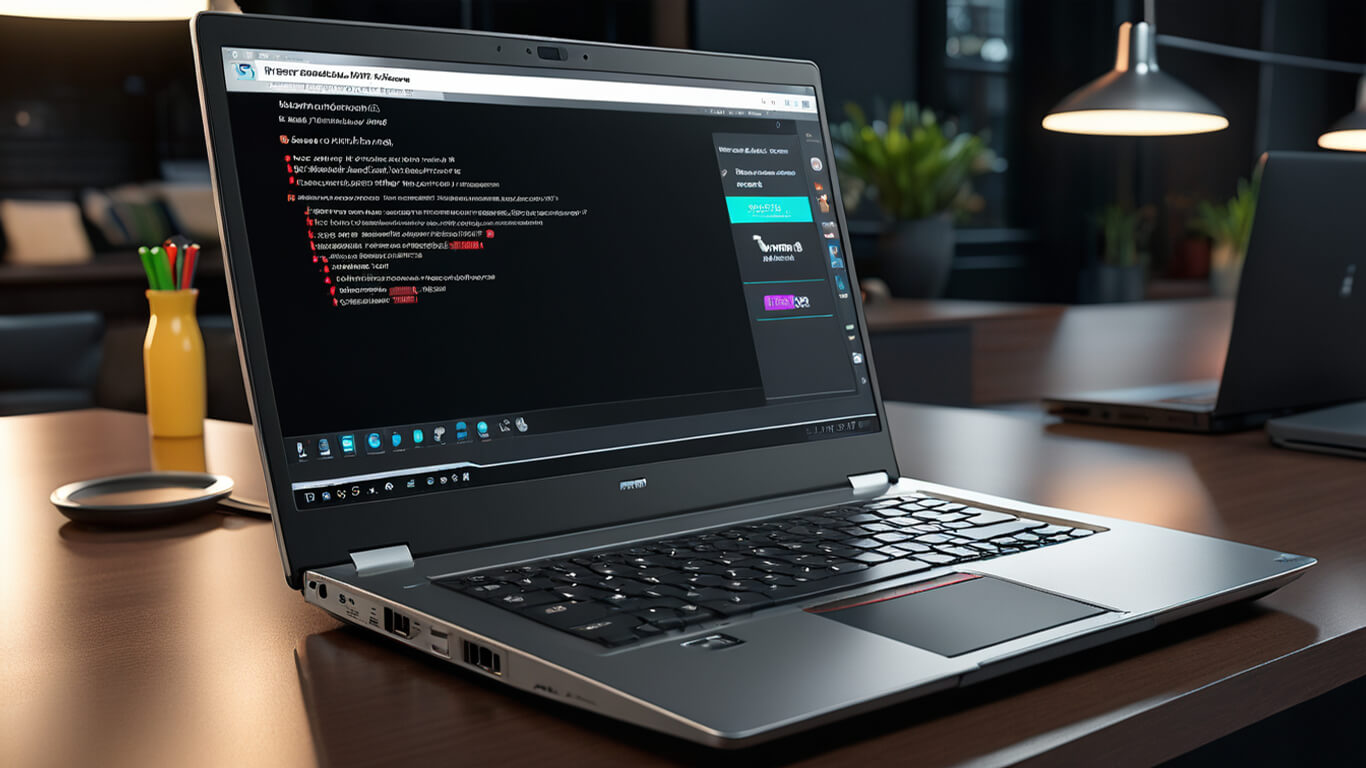In today’s digital age, password management is more important than ever. With cyber threats on the rise, having strong passwords is crucial to safeguarding your personal information. But what exactly makes a password strong? And how can you avoid common mistakes that put your accounts at risk?
We will explore the importance of password security, tips for creating strong credentials, tools for managing passwords, and best practices for keeping your passwords secure. Let’s dive in and enhance your online security!
Table of Contents
Key Takeaways:
Create strong passwords using a combination of letters, numbers, and special characters, and avoid using personal information. Avoid common password mistakes like using easy-to-guess passwords, reusing the same password, and sharing passwords with others. Use tools like password managers, two-factor authentication, and biometric authentication to securely manage your passwords.
What is Password Management?
Password management involves securely storing and organizing passwords to protect sensitive information and accounts from unauthorized access.
Using a reliable password manager can greatly simplify the process of creating and managing complex passwords. These tools not only securely store your login credentials but also generate strong, unique passwords for each account. By utilizing a password manager, individuals and organizations can ensure that their sensitive data remains safe from cyber threats.
- One of the biggest risks posed by hackers is the potential for unauthorized access to personal or confidential information. Without proper password management practices, weak or reused passwords can easily be exploited.
- A password manager plays a crucial role in safeguarding data by encrypting passwords and providing a centralized location for storing them securely. This minimizes the risk of password-related security breaches.
- By incorporating a password manager into your daily routine, you can enhance your overall cybersecurity posture and protect yourself from identity theft, fraud, and other malicious activities aimed at compromising your digital presence.
Why is it Important to Have Strong Passwords?
Having strong passwords is crucial to enhance security and protect accounts and sensitive information from potential cyber attacks by hackers.
Strong passwords act as the first line of defense against unauthorized access to your accounts and confidential data. By incorporating unique combinations of letters, numbers, and special characters, users can significantly reduce the risk of their passwords being compromised. It is advisable to avoid using easily guessable information such as birthdays, names, or common words. Changing passwords regularly and never sharing them with others further strengthens the security measures in place.
How to Create a Strong Password?
Creating a strong password involves using a combination of unique characters, including letters, numbers, and symbols, to make it difficult for attackers to breach your accounts.
To enhance the security of your passwords, creating complex and random combinations is essential. Avoid the temptation of using common words, phrases, or easily guessable patterns. Refrain from incorporating personal information like birthdays or names in your passwords as they are easily exploitable. A strong password should ideally be lengthy, with a minimum of 12 characters, and involve a mix of uppercase and lowercase letters, numbers, and special symbols.
For managing multiple unique and complex passwords across various platforms, consider utilizing a trusted password manager. These tools not only securely store your passwords but also help generate strong, distinct passwords for each of your accounts, making it easier to maintain security without the burden of memorization.
Use a Combination of Letters, Numbers, and Special Characters
To create a strong password, combine letters, numbers, and special characters to enhance its complexity and security against potential attacks.
Using a diverse combination of characters is crucial in protecting your valuable online information. By incorporating uppercase and lowercase letters, numbers, and special symbols, you create a complex password that is harder for hackers to crack. For instance, using a mix of characters like ‘P@ssw0rd#2022’ offers a strong defense mechanism.
Avoid common patterns like ‘123456’ or ‘password’ that can be easily guessed. Instead, opt for unique combinations that hold personal significance but are not easily associated with you. This adds an extra layer of protection against unauthorized access.
Avoid Using Personal Information
Steer clear of using personal information such as names, birthdates, or addresses in your passwords to prevent unauthorized access to your accounts.
When selecting a password, it is crucial to avoid common words or phrases that can be easily associated with you. This includes significant dates, the names of family members, or favorite places. These details are easily accessible to identity thieves and can pose a significant risk to your online security.
By creating passwords that are unique, complex, and unrelated to personal details, you enhance the protection of your sensitive data. Remember, a strong password is your first line of defense against cyber threats.
Make it Long and Complex
Length and complexity are key factors in creating a strong password that can withstand sophisticated hacking attempts and unauthorized access.
When crafting a password, always aim for a length of at least twelve characters as a baseline. This allows for a wider range of potential combinations, making it harder for attackers to crack the password through brute-force methods. Incorporating a mix of uppercase and lowercase letters, numbers, and symbols further bolsters the password’s complexity. These variations increase entropy, making it more challenging for hackers to decrypt the password. By opting for complex passwords, users are enhancing their security posture, reducing the likelihood of falling victim to cyber threats.
Use Different Passwords for Different Accounts
Utilize unique passwords for each of your accounts to prevent a single compromised password from jeopardizing multiple online accounts.
When you reuse the same password across multiple platforms, you significantly increase your vulnerability to cyber attacks. If a hacker gains access to one of your accounts, they can easily test that same password on other accounts, potentially gaining entry to your email, social media, and even financial accounts.
The consequences of password reuse can be severe, ranging from identity theft to financial loss. Using the same password for different accounts negates the security measures put in place by websites and services to protect your data.
By adopting distinct passwords for each account, you minimize the impact of a potential breach on your overall account security. This proactive approach enhances your online safety and protects your sensitive information from falling into the wrong hands.
What Are Some Common Password Mistakes to Avoid?
Avoiding common password mistakes is essential to maintain the security of your accounts and protect sensitive information from malicious attacks.
One prevalent mistake is using easily guessable passwords, such as ‘password’ or ‘123456’. These weak passwords make it easier for hackers to access your accounts.
Another mistake is reusing passwords across multiple accounts. If one account gets compromised, all others are at risk. Sharing passwords with others can lead to unauthorized access and compromise your security.
To avoid these risks, use strong, unique passwords for each account, enable two-factor authentication, and consider using a password manager to securely store your passwords.
Using Easy-to-Guess Passwords
Avoid using easy-to-guess passwords, as they are vulnerable to brute force attacks and compromise the security of your accounts.
Simple passwords containing common words, phrases, or number sequences can be cracked by automated programs in a matter of minutes. Instead, consider using complex passwords that combine uppercase and lowercase letters, numbers, and symbols. Aim for a minimum length of 12 characters to enhance resilience against hacking attempts.
One useful strategy is to create passphrases that are easy for you to remember but difficult for others to guess. This could involve combining unrelated words or adding personal elements such as dates or initials.
Furthermore, implementing two-factor authentication can add an extra layer of security to your accounts, even if your password is compromised. Always use different passwords for each account to prevent a single breach from compromising multiple services.
Reusing the Same Password for Multiple Accounts
Refrain from reusing the same password for different accounts to prevent widespread security vulnerabilities in case of a single password compromise.
When individuals reuse passwords across multiple accounts, they open themselves up to a myriad of risks. If a single password is compromised, whether through a data breach or a phishing attack, it can have a domino effect on all linked accounts. This means that a cybercriminal could potentially gain access to bank accounts, email, social media, and other sensitive information with just one compromised credential.
To combat this threat, it is essential to establish unique passwords for each online account. Using a password manager can greatly simplify this process by securely storing and generating complex passwords for different platforms.
The benefits of having distinct passwords are immense. By diversifying passwords, individuals decrease the likelihood of a security breach impacting multiple accounts simultaneously, thereby safeguarding their personal and financial information.
Sharing Passwords with Others
Sharing passwords with others undermines the security of your accounts and exposes sensitive information to unauthorized individuals.
When passwords are shared, it can lead to a range of security risks, leaving your personal and professional data vulnerable to cyber threats. One major danger is the potential misuse of your login credentials by malicious actors who could compromise your identity, steal your financial information, or impersonate you online for fraudulent activities. This breach in security not only puts your own data at risk but also jeopardizes the privacy and confidentiality of others linked to your accounts. It is crucial to maintain a strict policy of keeping passwords confidential and not sharing them with anyone under any circumstances.
What are Some Tools for Managing Passwords?
Various tools, such as password managers, offer efficient solutions for managing and securing passwords across multiple accounts and devices.
These password management tools are designed to provide a secure way of storing and organizing your credentials, eliminating the need to memorize numerous complex passwords.
Two-factor authentication adds an extra layer of security by requiring not only a password but also a secondary form of verification, such as a code sent to your phone.
Biometric authentication, utilizing physical characteristics like fingerprints or facial recognition, offers a convenient and cutting-edge method to access accounts without the need for remembering passwords.
Password Managers
Password managers are essential tools that help users securely store and retrieve complex passwords, reducing the risk of data breaches and unauthorized access.
Password managers provide the convenience of generating unique, strong passwords for each online account, removing the burden of remembering multiple intricate combinations. By encrypting password data with high-level security algorithms, these tools ensure that sensitive information remains safe from cyber threats and hacking attempts. This not only streamlines the login process but also promotes password hygiene by discouraging the reuse of weak passwords across platforms.
Two-Factor Authentication
Two-factor authentication provides an additional layer of security by requiring users to verify their identity through multiple verification methods.
By combining something a user knows, such as a password, with something they have, like a fingerprint or a one-time code sent to their phone, two-factor authentication significantly reduces the chances of unauthorized access to online accounts. This added layer of security acts as a barrier against cyber threats, making it more challenging for hackers to breach accounts even if they manage to obtain login credentials. Businesses and individuals alike can greatly benefit from implementing two-factor authentication, as it adds an extra level of protection without complicating the user experience.
Biometric Authentication
Biometric authentication utilizes unique physical characteristics such as fingerprints or facial features to provide secure access to devices and accounts.
One of the key advantages of biometric authentication is its ability to significantly reduce the risk of unauthorized access by providing a more reliable and secure method of verification. Unlike traditional passwords that can be forgotten, stolen, or shared, biometric data is inherent to the individual and cannot be easily replicated or compromised.
The implementation of biometric solutions in access control systems enhances overall security measures by adding an extra layer of defense against potential threats. By combining biometric identifiers with traditional security protocols, organizations can create a robust authentication framework that minimizes the chances of identity theft or data breaches.
How to Keep Your Passwords Secure?
Ensuring the security of your passwords involves regular updates, secure network usage, vigilance against phishing scams, and enabling security features on your devices.
Regularly updating your passwords is crucial to prevent unauthorized access and keep your accounts secure. Securing your network connections with strong encryption protocols adds a layer of protection against cyber threats.
Vigilance is key when it comes to phishing scams; be cautious of suspicious emails or messages asking for sensitive information. Enabling security features on your devices, such as two-factor authentication and biometric recognition, can significantly enhance your overall protection against potential breaches.
Regularly Update Your Passwords
Regularly updating your passwords helps minimize security risks and ensures that your accounts remain protected against unauthorized access.
One crucial aspect to remember is that frequent password changes introduce an additional layer of defense against cyber threats. By refreshing passwords regularly, you reduce the chances of hackers gaining prolonged access to your accounts.
Establishing a consistent password update schedule is vital. It’s recommended to change passwords every 3-6 months to maintain optimal security levels.
Furthermore, strong password practices play a significant role in safeguarding your online presence. Consider using a mix of uppercase and lowercase letters, numbers, and special characters to create complex and unique passwords for each account.
Use Secure Networks
Utilize secure networks to safeguard your password information and prevent interception or unauthorized access by malicious actors.
In terms of protecting your sensitive data such as passwords, opting for secure networks is key. Network security plays a crucial role in creating a barrier against cyber threats that could compromise your confidential information. Make sure to look for network connections that are encrypted and require a password for access. Avoid connecting to public Wi-Fi networks that are often unsecured and prone to potential attacks.
By being cautious with the networks you connect to, you can significantly reduce the risk of your passwords being intercepted or falling into the wrong hands. Always prioritize the security of your digital accounts to safeguard your personal information.
Be Wary of Phishing Scams
Maintain vigilance against phishing scams that attempt to trick users into revealing sensitive information or login credentials, posing a threat to password security.
Phishing attacks are a prevalent form of cybercrime that rely on social engineering tactics, often arriving in the form of deceptive emails, messages, or websites designed to appear legitimate. They can lead unsuspecting individuals to disclose personal and financial information, putting their sensitive data at risk.
To spot phishing indicators, closely examine the sender’s email address for irregularities, such as misspelled domain names or suspicious attachments. Look out for urgent demands for personal information or enticing offers that seem too good to be true.
For safeguarding against phishing attempts, it’s crucial to avoid clicking on links or downloading attachments from unknown sources. Instead, independently verify the legitimacy of requests by contacting the supposed sender through a trusted means of communication, such as a verified phone number.
Enable Security Features on Your Devices
Enable security features on your devices, such as biometric authentication, device encryption, and remote wipe capabilities, to enhance password protection and overall security.
Device security settings offer a robust defense against unauthorized access, ensuring that your sensitive information remains protected. By activating biometric options like fingerprint or facial recognition, you add an extra layer of security that is unique to you.
In addition, device encryption scrambles your data, making it indecipherable to anyone without the correct keys. This safeguard guarantees that even if a cybercriminal gains physical access to your device, they cannot easily access sensitive files.
Remote management tools enable you to take swift action in case of a stolen or lost device by remotely wiping the data, thereby preventing unauthorized access to your personal information. https://www.youtube.com/embed/et14hZiNXYY
Frequently Asked Questions
What is Password Management and Why is it Important?
Answer: Password management is the process of creating, storing, and using strong and secure passwords for your accounts. It is important because weak or easily guessable passwords can put your personal information and digital security at risk.
What are Some Tips for Creating Strong Credentials?
Answer: Here are some tips for creating strong credentials:
- Use a combination of uppercase and lowercase letters, numbers, and special characters
- Avoid using personal information or common words
- Use a different password for each account
- Make passwords at least 12 characters long
Why is Using a Different Password for Each Account Important?
Answer: Using the same password for multiple accounts makes it easier for hackers to access all of your accounts if they are able to figure out your password for one account. By using unique passwords, you are adding another layer of protection to your accounts.
How can I Remember all of my Different Passwords?
Answer: It can be challenging to remember multiple passwords, but there are some tools that can help. You can use a password manager, which securely stores all of your passwords and can generate strong passwords for you. You can also create a password formula that you can easily remember for each account, such as using the first letter of each word in a phrase or song lyric.
What Should I Do if I Suspect my Password has been Compromised?
Answer: If you suspect that your password has been compromised, it is important to act quickly. Change your password immediately and check for any suspicious activity on your account. You can also enable two-factor authentication for an extra layer of security.
Are There Any Other Ways to Protect my Accounts Besides Strong Passwords?
Answer: Yes, in addition to using strong passwords, you can also protect your accounts by enabling two-factor authentication, regularly updating your passwords, and being cautious of phishing scams. It is also important to use a secure network when accessing your accounts and to log out of accounts when using a public computer.







